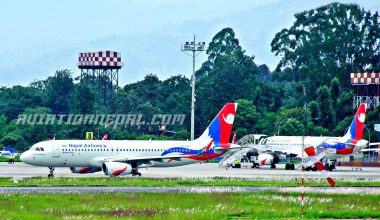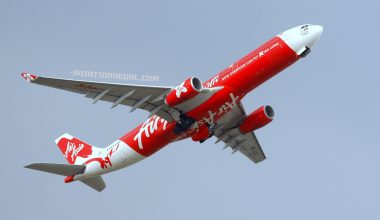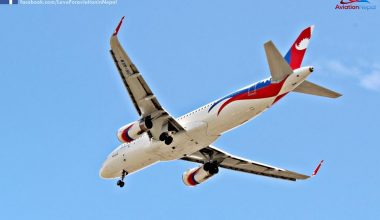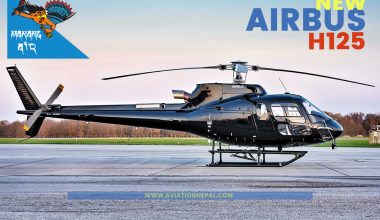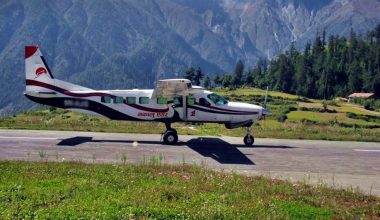Indian government had agreed on providing the required air routes to Nepal four years back but developments for the Strategic Agreement to air routes have not been fruitful so far.
Nepal has urged to provide three new entry air routes through Janakpur, Bhairahawa, Nepalgunj and Mahendranagar with the view to connect three new additional international airports i.e. Nijgadh, Bhairawa and Pokhara. However, Nepal has only one air route for its international flights. As international airlines connecting Kathmandu use the Simara route, aircraft have to make their descent and climb in the Indian airspace following the STAR (Standard Terminal Arrival Route) and SID (Standard Instrument Departure Route), respectively.
The Strategic Agreement to airspace agenda was endorsed during Indian Prime Minister Narendra Modi’s Nepal visit in August 2014. A joint communiqué issued by the two sides at the end of Modi’s visit read: “The cross-border direct routes will facilitate flights between regional airports in Pokhara and Bhairahawa, and this will save time and money for air travellers and also improve air connectivity between India and Nepal.”
The Indian team in 2016 had agreed for two Trans-Himalaya air routes by defining Kathmandu-Mahendranagar-Delhi air route (L626) to be bi-directional. The southern neighbor also granted bi-directional facility for the Lhasa-Kathmandu-Bharatpur-Bhairahawa-Delhi B345 and the Kathmandu-Jaleshwor-Patna G335 bi-directional air routes which are yet to be implemented.
If new air routes are not opened in time, the construction of international airport will be meaningless, according to the Civil Aviation Authority of Nepal (CAAN).
However, there was no substantial development with regard to three new cross-border air entry points. India had pointed out some technical issues with the proposed three new cross-border airspaces that needed to be sorted out first. The two countries then decided to hold another round of discussions. The Prime Minster of the two countries had directed the concerned authorities to resolve the issue within six months.
Officials from CAAN reported, “We have not been able to conduct even a single meeting with the Indian authority since 2016 and in such scenario, how can the airspace issue be sorted out?”
The official, however, said that the Airport Authority of India that deals with the airspace issue has informed “verbally” that a meeting is expected to be held in Kolkata soon. “However, the Indian side has not given us the exact date.” He said that if the first meeting is held, it would at least make the next meetings and negotiation process easier.
The Construction of Gautam Buddha International Airport has now expedited further, due to which the project is expected to complete by 2019. Likewise another international airport in Pokhara is expected to come into operation by the mid of 2021. For the smooth operation of the airport they would require aircraft’s entry over Nepalgunj, Bhairahawa or Mahendranagar airspaces.
An Aeronautical Information Publication (AIP) of CAAN shows that currently there are five exit points LUMBI, BIRAT, MECHI, JANAK and ONISA for international operators. Likewise, GAURA, BIRGA, PARSA and OMUPA are the entry point and Simara is the only entry route for any aircraft entering into Kathmandu FIR (Flight Information Region). Except Simara, two other entry points, MECHI and NONIM (East of Mt Everest) have been practicable for the arrival traffic from Bhutan and Lhasa, respectively.
The airspace of Bhairahawa, Nepalgunj is reserved by the Indian due to the presence of their defence base or air force in Gorakhpur in the Indian state of Uttar Pradesh. The airspace of Bhadrapur towards the India is reserved due to the presence of a Military Airport in Darjeeling district in northern West Bengal, India. It is spread over a large area and has regular fighter jets exercises.
As per the bilateral air service agreement (BASA) between Nepal and India, aircraft entering Nepal are allowed to maintain an elevation of 21,000ft from the Simara point. The provision is practical for making a descent to Kathmandu ’s Tribhuvan International Airport, but aircraft serving Second International Airport will have to make a spiral descent, or circle the sky, to land at the airport from the given elevation. Experts have said the Simara point will not be able to handle the increased air traffic even if one of the planned international airports were to come online. The proposed entry and exit points in the eastern and western parts of Nepal would provide enough room for aircraft to ascend and descend in the Nepali airspace
However, they have hinted at opening some sections of the airspace over Nepalgunj. Nepal has been pushing the agenda of expanding new cross-border airspaces for the past nine years.

